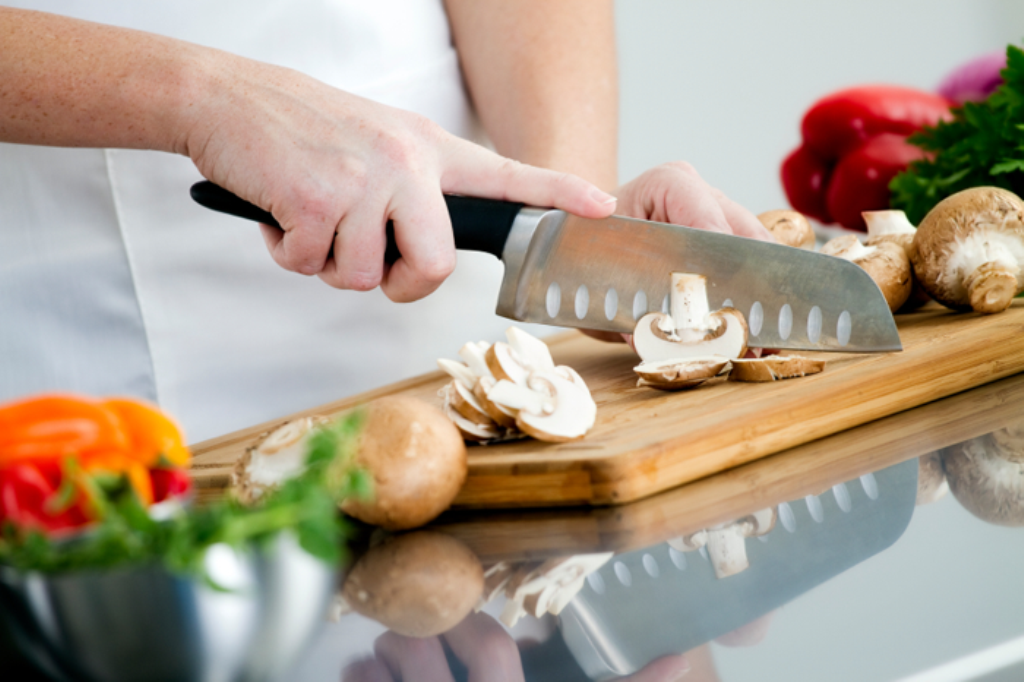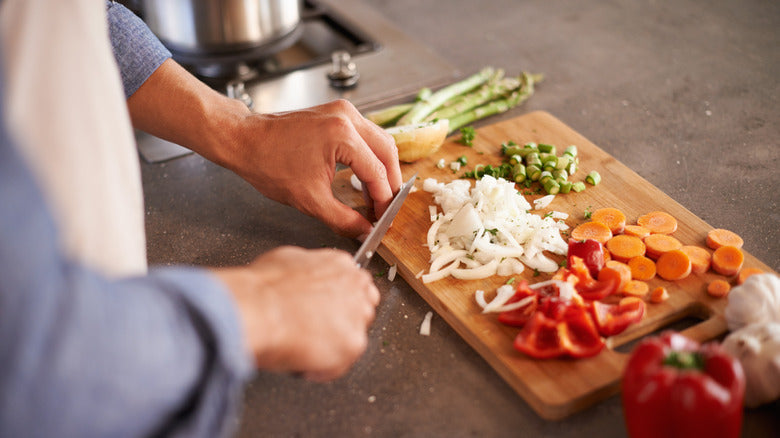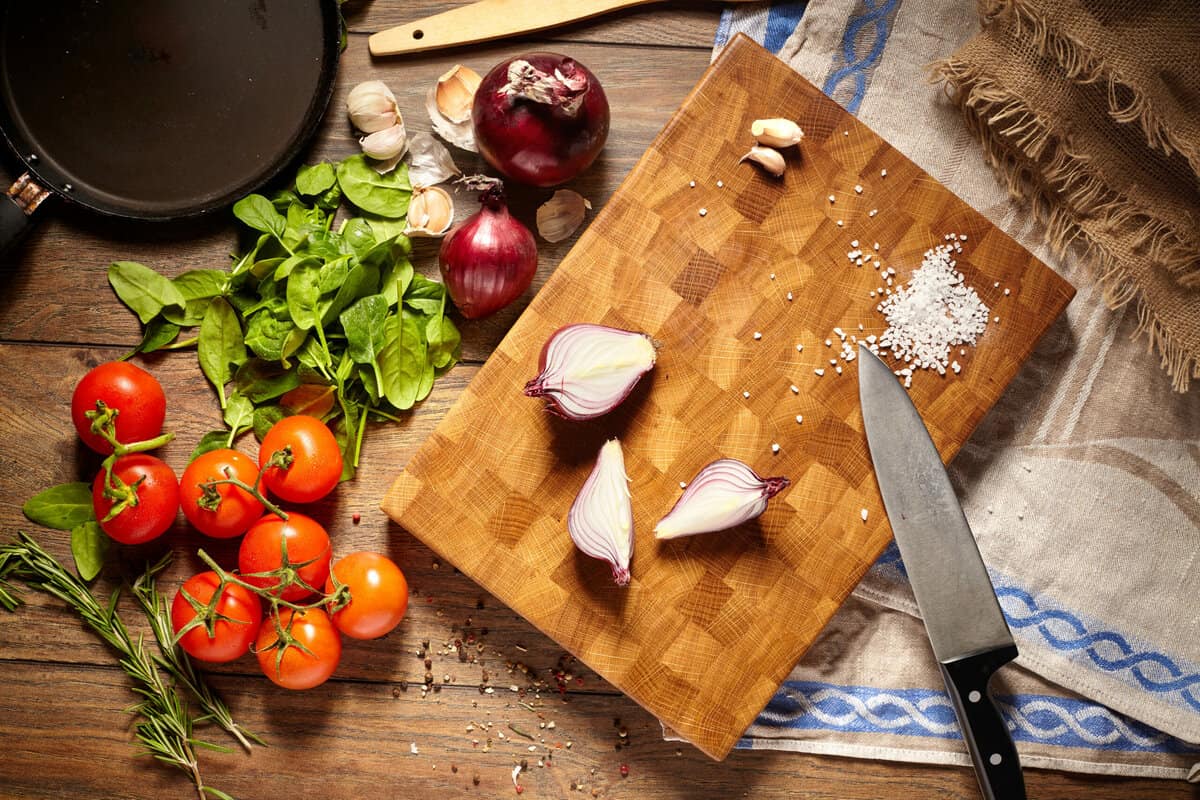In a professional kitchen environment, precision, cleanliness, and safety are paramount. Among the overlooked aspects of kitchen safety and efficiency is choosing the right cutting board for specific tasks. If you're wondering what color cutting board for seafood you should use, you've come to the right place. The answer lies in color-coded cutting boards designed to minimize cross-contamination and ensure food safety regulations are met.
Color-coded cutting boards aren't just a trend. They are a standard practice in professional kitchens worldwide, ensuring both safety and organization. If you're still unsure which cutting board to use for seafood, read onwe'll cover everything you need to know to keep your kitchen running smoothly.

Why Does Color Matter for Cutting Boards?
Color-coded cutting boards are a cornerstone of modern kitchen safety. They enable chefs and kitchen staff to adhere to food safety guidelines, such as those recommended by the Food Safety Modernization Act (FSMA) and other international standards. Color distinctions help prevent cross-contamination between different types of food, such as raw meats, seafood, fruits, and vegetables.
In the case of seafood, contamination risks can include bacteria like Vibrio or listeria, which can pose serious health risks. Assigning a specific color to your seafood cutting board ensures that it won't come into contact with other foods, reducing the risk significantly.
So, Whats the Recommended Color for Seafood?
In most commercial kitchens, the standard color for seafood cutting boards is blue. This helps kitchen staff quickly identify which cutting board to use when preparing fish, shellfish, or other aquatic ingredients. The blue color is associated with water, making it a logical choice for seafood preparation.
Using a blue cutting board exclusively for seafood is part of a broader system of color-coding that helps streamline kitchen operations. For example:
- Red: Raw meats like beef or lamb
- Yellow: Raw poultry
- Green: Fruits and vegetables
- White: Dairy products
- Blue: Seafood
- Brown: Cooked meats and other prepared foods
Material Considerations: Wood or Plastic?
Aside from color, the material of your cutting board also matters. Most commercial kitchens prefer plastic cutting boards for seafood preparation. Plastic boards are non-porous and easier to clean than traditional wooden boards, making them less likely to absorb juices or harbor bacteria.
That being said, wooden cutting boards, especially those made from hardwoods like maple or walnut, can be used for tasks involving dry seafood preparations like filleting fish, as they are gentler on knives. However, they require diligent cleaning and maintenance to avoid any safety hazards.
How to Maintain Your Seafood Cutting Board
Maintaining your cutting board is as important as choosing the right one. Here are some tips for both plastic and wooden boards:
Plastic Boards:
- Wash immediately after use with hot, soapy water.
- Sanitize with a diluted bleach solution or a commercial sanitizer recommended for food surfaces.
- Inspect for nicks and scratches. Replace when the surface becomes heavily worn.
Wooden Boards:
- Clean with warm, soapy water and a scrub brush. Avoid soaking.
- Oil regularly with food-safe mineral oil to prevent cracks and warping.
- Disinfect using a natural solution like vinegar or lemon juice.
For more tips on maintaining your cutting board, visit CuttingBoard.com.
Blue Boards Beyond Seafood: Dual Purposes
In smaller kitchens where space is premium, a blue cutting board might serve multiple purposes. It's essential, however, to ensure the board is thoroughly cleaned and sanitized between uses to prevent cross-contamination. For example, you might use a blue board not only for seafood but also for preparing sushi, which may involve both seafood and vegetables. Always follow strict prep station protocols to avoid risks.
How Color-Coded Cutting Boards Benefit Kitchen Operations
A streamlined, color-coded system doesn't merely meet food safety guidelines; it also boosts productivity. Clear color distinctions help new kitchen staff, interns, or temporary workers quickly adapt to your kitchen's workflow.
Additionally, having designated cutting boards for specific tasks reduces wear and tear on equipment. When a seafood board is used exclusively for fish and shellfish, the wear is consistent and manageable, extending its lifespan.
Advanced Strategies: Training Your Staff
Once you've implemented a color-coded system, the next challenge is training your staff to adhere to it. Orientation programs for new hires should include detailed instructions on using the system.
Consider labeling cutting boards with stickers or markers to reinforce their primary purpose. Placing laminated guides with your color-code system in the kitchen also ensures that no one forgets which boards correspond to which ingredients.
Integrating Other Tools for Seafood Prep
While ensuring the proper use of cutting boards, don't forget to pair them with the right knives and utensils. Knives used for seafood should also be sanitized properly, and its often a good idea to have distinct knives for raw seafood to match your blue cutting board.
Learn more about proper sanitation steps here: State Food Safety.
Related Reading:

Frequently Asked Questions
1. Can I use a wooden cutting board for seafood?
Yes, but it's generally recommended to use a plastic board for raw seafood due to its non-porous surface. Wooden boards are better suited for dry preparations.
2. How often should I replace my cutting board?
Replace your cutting board when it becomes heavily scratched or worn, as these surfaces can harbor bacteria and compromise safety.
3. What are the best practices for cleaning a seafood cutting board?
Wash with hot, soapy water immediately after use and sanitize regularly. Avoid mixing seafood board cleaning tools with those used for other types of cutting boards.
For more information on cutting board safety practices, visit Eat Right.
This article contains affiliate links. We may earn a commission at no extra cost to you.






Leave a comment
This site is protected by hCaptcha and the hCaptcha Privacy Policy and Terms of Service apply.